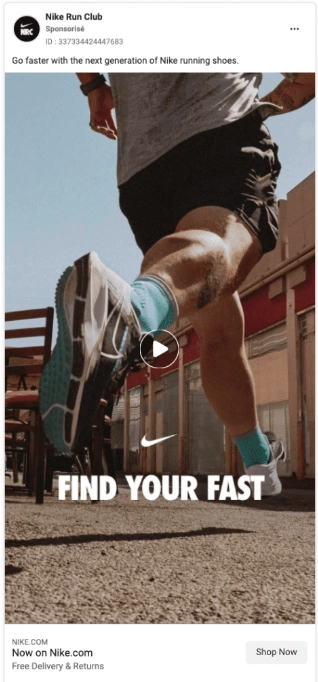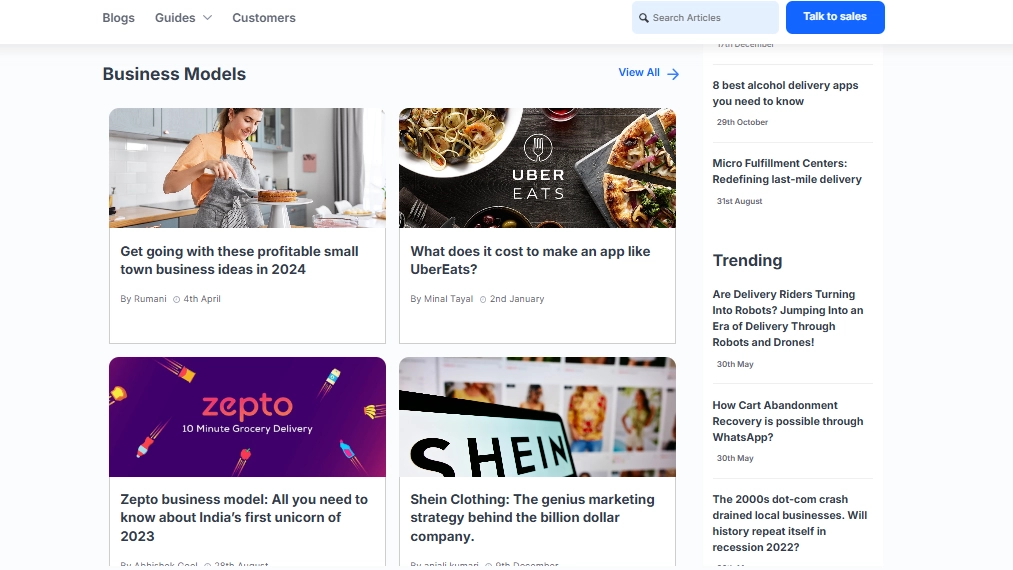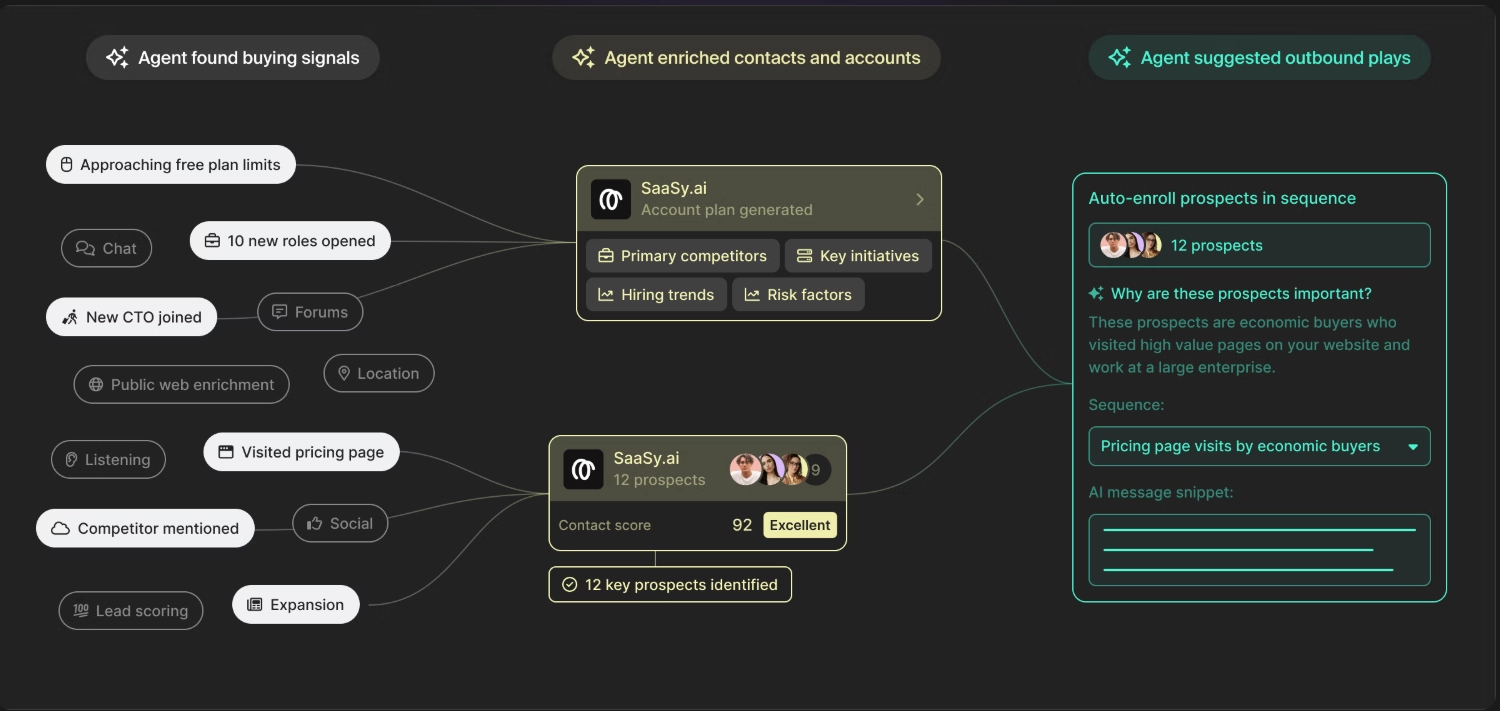
AI Email Marketing: How To Use It In 2025?
As someone who’s been in the lead generation and outreach software space for quite some time, I’ve seen firsthand how AI can transform email campaigns - from smarter segmentation to hyper-personalized content that actually gets clicks.
And let me tell you, the days of blasting generic emails and hoping for the best are long gone.
In this guide, I’ll walk you through how to use AI email marketing effectively, including the best practices to follow and real-world examples that prove AI is more than just a buzzword.
The best part?
Whether you want to automate workflows, boost engagement, or optimize send times down to the second, AI can do the heavy lifting for all these use cases and more.
Ready? Let’s dive in!
How Is AI Being Used In Email Marketing In 2025?
AI is being used in email marketing in various ways, making all kinds of email-related operations faster and smarter than ever before.
It’s fair to say that AI has become the backbone of high-performing email campaigns, with more than 50% of marketers believing that AI-driven email marketing outperforms traditional tactics.
There are several reasons why AI has turned into a must-have for email marketing.
First, AI-driven personalization has levelled up.
And I’m not just talking about adding a first name to the subject line.
AI now analyzes customer behavior, predicts preferences, and delivers hyper-relevant content tailored to each recipient. Think of it as having a personal email assistant for every subscriber.
Then, there’s AI-powered segmentation.
Forget about broad audience groups—AI clusters your email list into micro-segments based on browsing habits, past purchases, and even predicted intent.
That means higher open rates, more engagement, and, ultimately, more revenue.
AI also takes the guesswork out of email copy - traditionally the most challenging part of crafting engaging email campaigns.
Advanced natural language processing (NLP) tools generate compelling subject lines and email bodies, A/B test variations in real-time, and even tweak the tone of your message to match audience sentiment.
The result? Emails that feel more human, convert better, and require way less manual effort.
Then, of course, when talking about AI, we cannot forget automation, as AI-powered workflows go beyond simple autoresponders.
Now, your email campaigns can be triggered dynamically based on user interactions, ensuring that the right message hits the inbox at the perfect moment. Abandoned cart reminders, personalized upsell offers, re-engagement emails - AI makes it all seamless and ridiculously effective.
Finally, AI is optimizing send times like never before.
Instead of relying on general best practices, AI predicts when each recipient is most likely to open and engage with an email.
No more one-size-fits-all send times, as AI provides you with precision timing that drives actual results.
What are the benefits of using AI in email marketing?
Here are some of the most notable advantages of using AI in email marketing:
- Hyper-personalization at scale - AI analyzes customer data to craft highly personalized email content, ensuring each recipient gets messages tailored to their interests, behaviors, and purchase history. This leads to stronger engagement and higher conversion rates.
- Smarter audience segmentation - Instead of broad, manual segmentation, AI automatically groups subscribers into micro-segments based on real-time behaviors, demographics, and predicted intent. This means more relevant messaging and better campaign performance.
- Optimized subject lines and content - AI-powered tools generate, test, and refine subject lines, email copy, and CTAs based on what resonates best with your audience. As a result, you’ll get a significant increase in open and click-through rates.
- Enhancing automated email workflows - AI enables advanced automation, triggering emails at precisely the right moments based on user actions, such as product interest or inactivity, allowing you to keep leads warm and customers engaged without constant manual effort.
- Predictive send time optimization - AI determines the best time to send emails for each subscriber, increasing the chances of your message landing at the top of their inbox when they’re most likely to engage.
- Improved deliverability and reduced spam rates - AI monitors email performance and adjusts sending patterns, content, and frequency to avoid spam filters and maintain high deliverability. This ensures your emails actually reach the inbox instead of getting lost in the void.
- Advanced performance insights - AI continuously tracks and analyzes campaign performance, providing actionable insights on what’s working and what’s not. This allows you to refine your strategy in real-time and maximize ROI.
- Less time spent on manual tasks - With AI handling segmentation, content optimization, and marketing automation, marketers can focus more on strategy and creativity rather than repetitive tasks.
10 Use Cases of AI in Email Marketing
Although AI can be implemented in email marketing in various ways, some use cases yield better results than others.
Here, we’ll get a closer look at the most successful and impactful AI use cases in email marketing to give you inspiration for your own use.
1. Automated Personalized Email Sequences
There are two key reasons why cold email campaigns don’t really work:
- Most of them are not aimed toward the right audience - While including leads who fit your ICP in email cadences is a solid starting point, the fact is that many of those might simply not be interested in your product right now. This means that a good part of your email marketing efforts will be wasted on accounts that were never a match to begin with.
- Not enough personalization - Although many outreach tools included some personalization options even before the rise of AI, the fact is that most of these options were not that sophisticated, as they pretty much boiled down to including your lead’s first name and job role. This “generic” personalization can be pretty off-putting to both B2B and B2C leads.
AI-driven platforms like Warmly transformed the entire outreach process for the better, enabling you to create detailed workflows that engage hot, high-intent leads.
Here’s how Warmly does it:
Step #1: The platform identifies your website visitors, including both companies and individual stakeholders.

Step #2: It analyzes their on-site behavior and third-party intent signals (like their LinkedIn activity and topics they're researching).
Step #3: Based on those insights and your ICP criteria, Warmly identifies the leads most likely to convert right now.
Step #4: Its AI-driven Orchestrator feature takes it from there, adding those leads to automated email sequences you can customize (sending frequency, number of leads you want to include from a single company, etc.). Think of the Orchestrator as a 24/7 present SDR that does all the heavy lifting for you.

Step #5: The Orchestrator uses the granular insights Warmly revealed on each lead to craft hyper-personalized emails that cut through the noise, going far beyond just first names and job roles.
For example, you can mention the exact page the lead was on, the solutions they researched on the web, the form they didn’t fill out completely, etc. With AI, customization options are virtually endless.
Psst… You can give Warmly’s AI-powered auto-email feature a go here.
2. AI-Generated Subject Lines and Copywriting
The success of an email campaign often hinges on the subject line and message quality.
AI copywriting tools, powered by natural language processing (NLP), can analyze past email performance, audience sentiment, and engagement trends to craft compelling subject lines and body copy that are more likely to resonate.
Some AI tools even generate multiple variations and A/B test them in real-time, automatically selecting the best-performing version.
The result? Higher open rates, better click-through rates, and less time spent brainstorming copy.
3. Predictive Email Send Time Optimization
Not all subscribers check their inboxes at the same time, and sending emails at the wrong moment can mean getting lost in the noise.
AI leverages machine learning to analyze past engagement data and predict the optimal time to send emails to each subscriber.
Instead of sending at a standard "best practice" time (e.g., Tuesday at 10 AM), AI ensures your emails land in inboxes when each recipient is most likely to open and engage.
This level of precision increases open rates and improves overall campaign performance.
4. Advanced Audience Segmentation
Traditional segmentation relies on marketers manually sorting email lists based on demographics, purchase history, or engagement levels.
AI takes this a step further by continuously analyzing subscriber behavior, detecting patterns, and creating micro-segments that evolve over time.
For example, instead of a broad category like "frequent buyers," AI might create segments like "customers who purchase every 45 days and respond well to discount codes" or "new subscribers who have browsed product pages but haven’t made a purchase yet."
This allows for far more targeted messaging that drives results.
5. Hyper-Personalized Product Recommendations
AI enables hyper-personalized email marketing by tracking user interactions, browsing history, and purchase behavior to send highly relevant product recommendations.

Imagine a subscriber visits your website and views a product but doesn’t buy it.
AI can trigger an email featuring that product, along with related recommendations, customer reviews, or even a limited-time discount.
This strategy mirrors what platforms like Amazon have mastered—keeping potential buyers engaged and nudging them toward a purchase without feeling intrusive.
6. Abandoned Cart Recovery Campaigns
Cart abandonment is a major challenge for e-commerce and SaaS businesses alike. AI-driven abandoned cart emails go beyond simple reminders.
They use behavioral data to personalize messages based on why the customer might have left. If price sensitivity is a factor, AI can include a discount.
If the customer viewed similar products, AI can suggest alternatives. If urgency works better, the email might mention that the stock is running low.
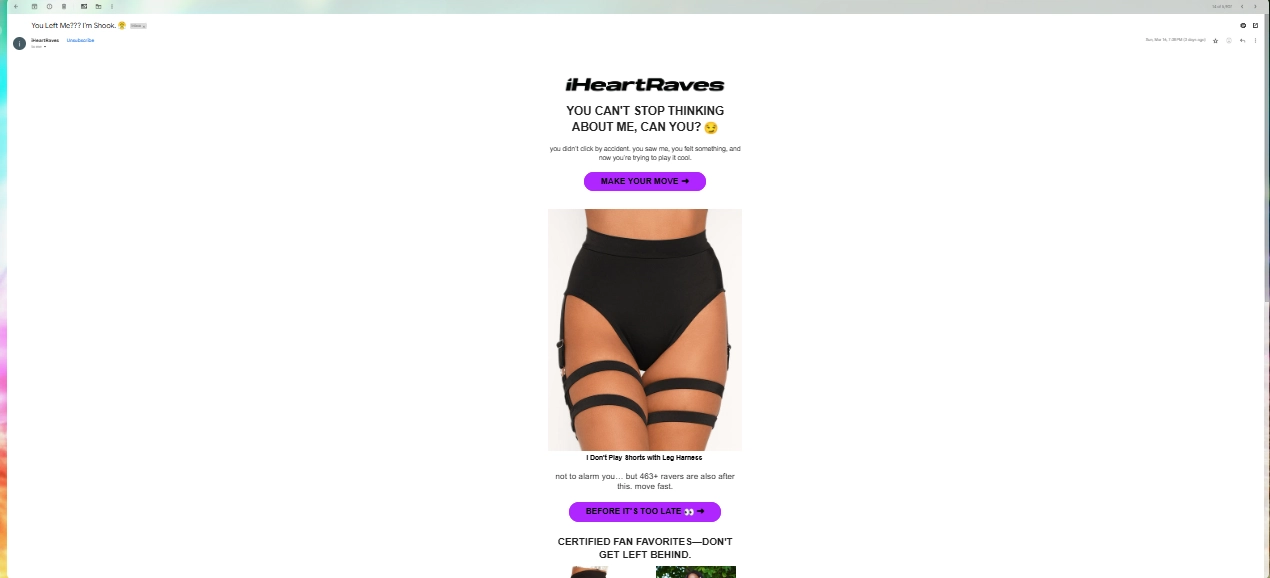
These dynamic, intelligent follow-ups significantly increase cart recovery rates.
7. Dynamic Content Adaptation
One-size-fits-all email content no longer works.
AI-powered email marketing platforms can customize emails in real time based on individual user attributes.
For example, a single email campaign can display different product recommendations, images, or call-to-action buttons depending on the recipient’s past behavior, location, or even time zone.
A user in New York might receive an email featuring winter jackets, while someone in Miami sees swimwear - all from the same email.
This level of personalization enhances engagement and drives conversions.
8. Re-Engagement and Win-Back Campaigns
Not all subscribers stay active, and customer churn is inevitable.
AI helps re-engage dormant subscribers by analyzing inactivity patterns and delivering targeted win-back campaigns.
Instead of sending a generic "We miss you" email, AI can determine whether a subscriber responds better to discounts, product recommendations, or exclusive content.
If someone hasn't opened an email in months but previously engaged with educational content, AI might send a high-value blog post rather than a promotional email, increasing the likelihood of re-engagement.
9. AI-Powered Email Performance Analysis
AI doesn’t just optimize emails before they’re sent—it continuously monitors and analyzes campaign performance.
AI can provide actionable insights in real-time by tracking metrics like open rates, click-through rates, and conversions.
For example, if engagement starts dropping, AI can suggest changes to subject lines, email frequency, and content tone.
Some platforms even offer automated recommendations, ensuring email strategies stay optimized without requiring constant manual analysis.
10. Spam Score Prediction and Deliverability Optimization
Email deliverability is a major challenge - if your emails land in spam, they’re as good as useless.
AI helps predict whether an email is likely to trigger spam filters and suggests adjustments before sending.
It can tweak subject lines, remove spammy words, and optimize email formatting to improve inbox placement.
AI also monitors sender reputation and adjusts sending strategies to avoid blacklists, ensuring your emails actually reach your audience.
5 Successful Examples of Companies Using AI For Email Marketing
And now, let’s explore some businesses that have already implemented AI in their email marketing strategies and break down the results they got.
1. Automated Email Campaigns - StraightIn x Warmly
StraightIn is a LinkedIn marketing agency that was looking to enhance its demand generation but struggled with creating targeted campaigns because it had no visibility into potential high-value leads.
StraightIn then started using Warmly to gain a better understanding of who their prospective customers are.
Warmly helped them identify website visitors and detect the ones showing the highest levels of intent.
At the same time, the Orchestrator feature allowed StraightIn’s team to reach out to lead segments that demonstrate the highest intent with hyper-personalized emails.
The result of this targeted campaign was $10,000 in revenue in just two weeks, as StraightIn’s team was able to reach its most engaged leads from the start instead of wasting time on cold leads.

2. Personalized Recommendations - Ulta Beauty x Movable Ink
Ulta Beauty, one of the United States’ top beauty retailers, was looking for a way to provide its potential and existing customers with a more advanced level of personalization in its email campaigns than ever before.
However, doing that manually would be too massive of a task, given its customer and prospect base.
This is why Ulta Beauty teamed up with Movable Ink to create dynamic, automated email campaigns that deliver unique and engaging messaging.
Movable Ink leveraged various factors to create optimized email campaigns, such as previous purchases, recent behavior, time of day, and recently browsed items, to provide each email recipient with a fully personalized offer bound to resonate with them.

This approach resulted in a 34.1% increase in total conversion rates and a 317% increase in click-through rates.
3. Improved Deliverability - Vivino x Twilio
Vivino is an e-commerce brand specializing in selling and recommending wine.
As such, it relied primarily on email to grow its customer base, upsell products, and drive customer loyalty.

However, as Vivino’s email campaigns scaled, its team started facing various deliverability issues and turned to Twilio SendGrid for help.
Twilio combines the power of AI with human experts to deliver excellence, ensuring every email reaches its recipient and maintaining Vivino’s domain quality.
This helped the startup scale effortlessly, experiencing higher open and click-through rates.
4. Crafting Personalized Email Copy - Hypernova x Smartwriter
Hypernova is a cold email lead generation agency that provides its clients with top-to-bottom email campaign management and optimization.
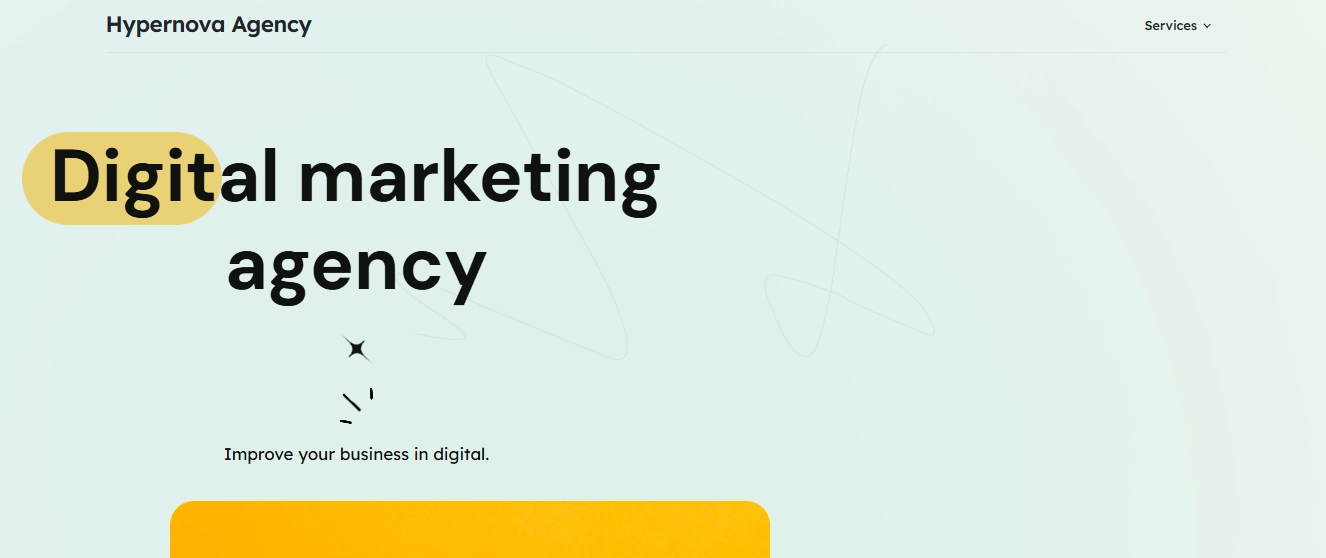
As such, it needed help to create personalized and engaging email content on scale.
Its team opted for Smartwriter, an AI-powered email copy generation tool, which allowed them to generate perfectly tailored content for all their clients’ leads in seconds.
Using Smartwriter not only helped speed up the entire email writing process but also doubled Hypernova’s reply rates, resulting in higher client retention and revenue.
5. Optimizing Email Send Time - HEMA x Selligent
HEMA, a Dutch variety retailer, was looking to optimize sending times for its promotional emails and newsletters, as it realized that sending them at random times wasn’t yielding any real results.

That's when HEMA implemented Send Time Optimization in Selligent, using A/B testing with a control group as a benchmark.
Immediately, the combination of customer data from Universal Profiles and AI-driven timing began delivering noticeable results - a +2.44% open rate and a €1 million revenue boost.
Next Steps: Auto Email Prospects That Show Intent
AI-powered email marketing is only as effective as the quality of leads you engage with.
That’s why Warmly goes beyond just auto-emailing prospects - it helps you identify and connect with high-intent leads before your competitors do.
With Warmly, you get real-time visibility into your website visitors, uncovering both company-level and individual stakeholder insights.
It tracks third-party intent signals, LinkedIn activity, and research patterns to surface prospects who are actively looking for solutions like yours.
Then, its AI-driven Orchestrator crafts hyper-personalized emails that land in inboxes exactly when prospects are most engaged.
But that’s not all. Warmly also enables:
- AI Chat, an AI-driven chatbot with versatile use cases.
- Live Video Chat that lets you hop on a call with leads while they’re still on your website.
- Access to its massive B2B database, Coldly.
- Real-time alerts and lead routing to let you pounce on high-value leads while they’re still hot.
Ready to stop guessing and start closing?
Get started with Warmly today - try Warmly’s free plan or book a demo!
Read More
- 8 Examples of AI Marketing Automation: Learn how AI can help you better streamline your workflows.
- AI for Sales: Best Tools & Tips: Discover the best ways to use AI to optimize sales efforts across levels.
- 10 Best AI Marketing Tools for B2B Teams: Need an AI-driven tool to run marketing operations more efficiently? This in-depth guide reviews the top 10 platforms for various use cases.
- How to Track Email Opens in Gmail: Best tips for finding out if your emails are reaching your leads and how they engage with them.
- AI Lead Generation: AI can help you generate more leads in less time - learn how.
























